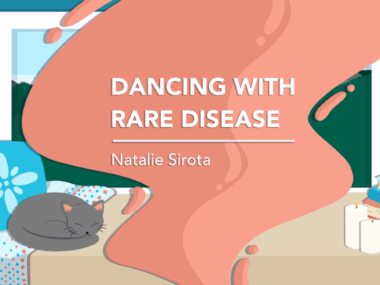Aging and disease combine to reshape my morning routine
I've slowed down, but exercise, supplements help start things on the right foot
Written by |

When I was younger and raising my children — years before most of my diagnoses, but while I was already living with symptoms — my morning routine was basically to hit the ground running. That has changed dramatically. Not only are my children all adults and self-sufficient, but as I age with these rare diseases, I need more time to get ready for my day.
I live with chronic Lyme disease, Ehlers-Danlos syndrome (EDS), irritable bowel syndrome, mast cell activation syndrome (MCAS), long COVID, arthritis, neuropathy, and hereditary angioedema (HAE).
I lived through a horrible bout of Lyme disease in 2005, when I had to take 21 different antibiotics and was bedridden and unable to move. It took a year to rebuild my immune system and regain my mobility, but I think I am stronger now.
Older, wiser, and happier
After my EDS diagnosis in 2015, which explained a lifetime of hypermobility, subluxations, and dislocations, I felt rather defeated, thinking I would only continue to decline. However, I learned from a wonderful physical therapist the proper exercises to help stabilize my joints. As a result, I do not have to rely as heavily on braces as I once did.
My MCAS is manageable these days if I watch what I eat, take care not to overdo things, and manage stressors. My arthritis is also under control in similar ways. The long COVID symptoms, which include brain fog and fatigue, aren’t that different from those I dealt with post-Lyme disease. They usually just crop up when I am under the weather or have pushed myself a bit too much.
After my HAE diagnosis, I was able to start daily maintenance medication and also have a rescue medication for any breakthrough attacks. Avoiding my known triggers, mostly stress, is also very important in keeping swelling at bay.
These days, my morning routine consists of much more than just waking up and getting going ASAP. As I age, it takes a bit more time and energy to get focused. I typically must start my day with exercises right out of bed, just to get moving. That’s soon followed by supplements, electrolytes, and a bit of caffeine. Throughout the day, I plan for more exercises focused on strength and mobility. On the days I skip these exercises, I certainly pay the price with pain and anti-inflammatory medications, which I need to use sparingly because they can also activate my HAE.
I may be slowing down, but I am not just older and wiser — I’m also happier. I have so much to be thankful for as I have overcome and endured a lot over the years. I have also learned so much about my diagnoses that I better understand how to properly care for myself. To those newly diagnosed or feeling overwhelmed, I would advise first finding a doctor or counselor who helps you feel heard and supported, possibly through the online community. Most of all, give yourself grace and time to recognize all your strengths and improvements along the way. We can live, and thrive, with rare disease.
Note: Angioedema News is strictly a news and information website about the disease. It does not provide medical advice, diagnosis, or treatment. This content is not intended to be a substitute for professional medical advice, diagnosis, or treatment. Always seek the advice of your physician or other qualified health provider with any questions you may have regarding a medical condition. Never disregard professional medical advice or delay in seeking it because of something you have read on this website. The opinions expressed in this column are not those of Angioedema News or its parent company, Bionews, and are intended to spark discussion about issues pertaining to angioedema.






Leave a comment
Fill in the required fields to post. Your email address will not be published.